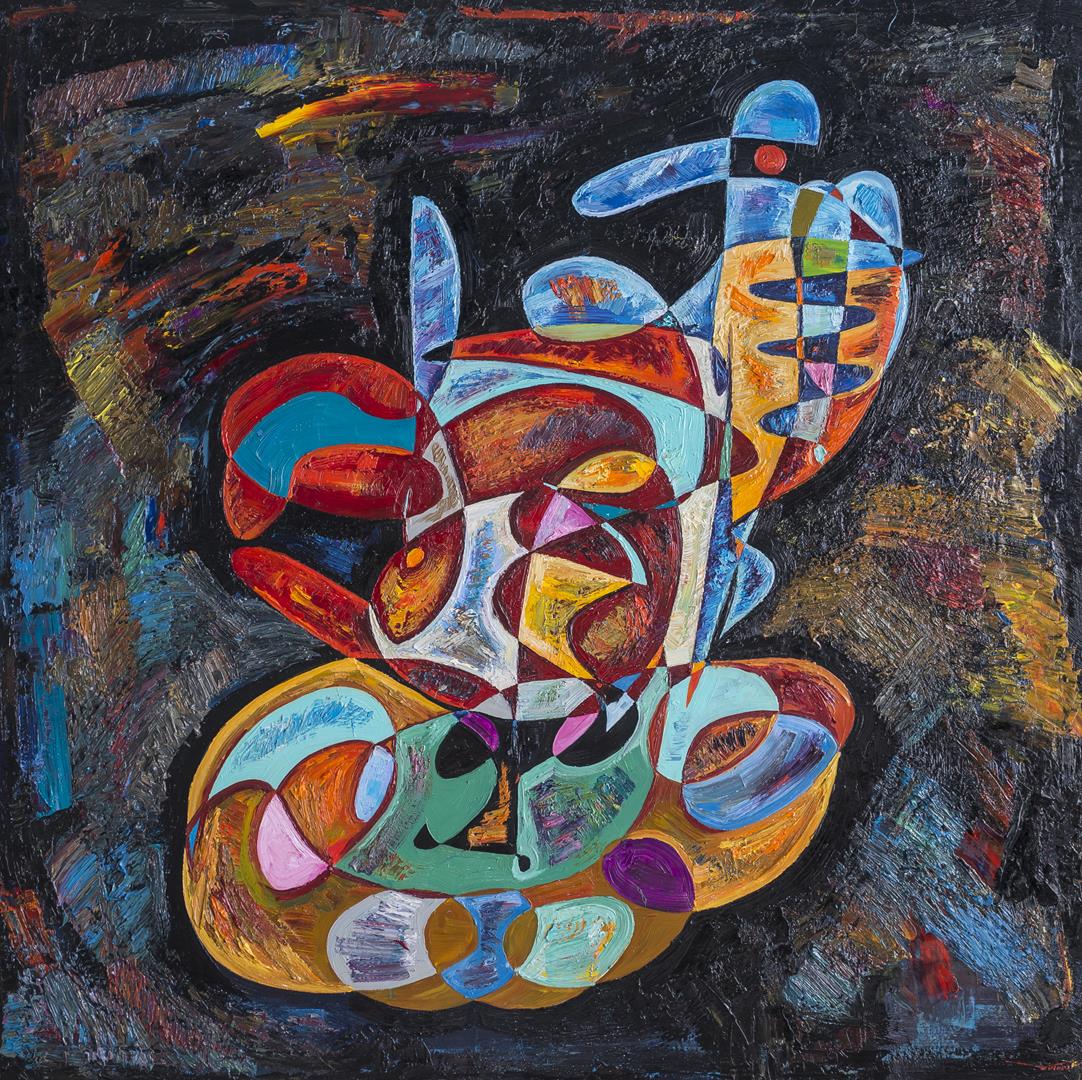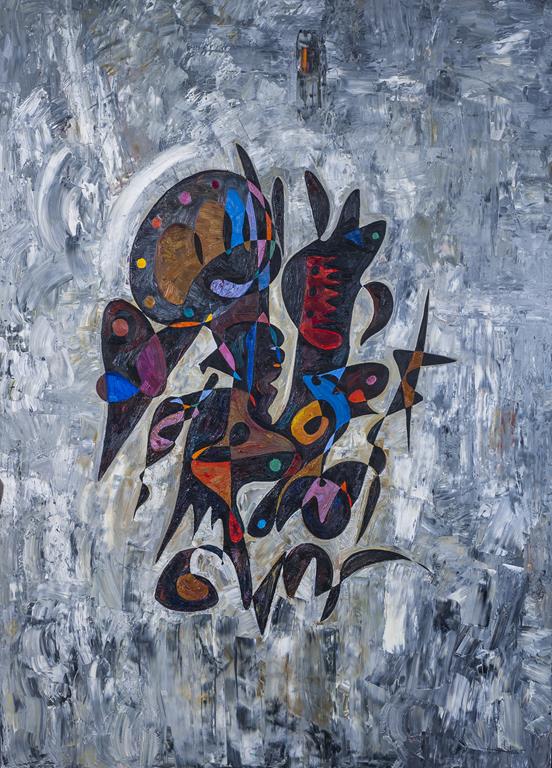COLLECTING ART : A CULTURAL OR SOCIAL CAPITAL ?
from web site
The end of United States dominance and the era, the collapse of the Berlin wall in 1989, led to the establishment of a free trade economy in the 90's. An explosion of art encouraged as a new kind of investment, and artistic production succumbed to financial power.

Since 1990 the arts have become a worldwide phenomenon. In today's postmodern art world, artistic facilities are not limited to particular Western capitals but widely dispersed in various parts of the world.
Istanbul Biennial, Turkey, Asia
Osaka Triennial, Osaka, Japan, Asia, ended in 2001 and began in 1990
Cetinje Biennial, Cetinje, Serbia and Montenegro since 1991.
Dak' Art biennial Senegal, Africa, since 1992.
Taipei Biennial, Taipei, Taiwan, Asia, began in 1992 as a local event.
Central America, caribbean Biennial, Santo Domingo, Dominican Republic, start in 1992.
Sharjah Biennial, United Arab Emirates since 1993.
Africa, johannesburg Biennale South Africa, started 1997 to 1995 end.
Gwangju Biennale, South Korea, Asia
Shanghai Biennale, China, 1996, Asia and 1998 biennials, since 2000.
Mercosul Biennial, Porto Alegre states members of the Mercosul and guests, since 1997.
See relater article
Biennials Art & Biennialisation Fairs
Contemporary Art Collection : A Good Investment
To understand the art market, we will need to think about players and its components. The art market focuses on exhibitions and fairs, allowing new artists to be discovered or promoted. The secondary market is dictated by auction houses and dealers, with the support of collectors, entrepreneurs, curators and art advisers, who empower artists' reputation by establishing the market price of the work. (1)
Collectors and their collections can be defined like the mix of symbolic, cultural, social and economic capital, Pierre Bourdieu(2) which since the 90s has diminished its cultural and social value in relation to its economic worth.
The amount of investors in contemporary art has increased. The first art market crash in the 1980's, a result of the Gulf War was followed between 1993 and 1990 with a period of downturn. With the institution of a global market, from September 2001 to July of 2007, the art market's value increased by 152%. (3)
In 2000,CNN appreciated the global art market at $4 billion annually, 90 percent of which was controlled by Christie's and Sotheby.
see article
The impact of the net on the art market was remarkable. It not only allowed collectors to have access to artists and their costs, but allowed collectors that were new to invest in artists without taking market risk.
The equilibrium of the art market as a protective advantage was reaffirmed by its resistance to the collapse of the New York and Paris stock markets after the September 11 crisis. Since that time, progress has been made, and a new generation of billionaire collectors has surfaced with the opening of international markets in Russia, India, China and the UAE.
In 2006 China ranked 4th in the market, which enabled it to receive its location like Sotheby's in america Christies in London, and Artcurial in France. Supported by Asian market housesartwork showed an increased profit of the number of collectors and 10% profit in 2006 has grown.
This gallery is housed in an industrial building complex in the 786th district. The area, which comprises about one hundred Chinese and galleries and spaces, reflects the current rise of modern art in the global marketplace and the interest of collectors that are international, regional and local
see article
With a development of 480% in the last 10 years, Indian art gained importance on the global art scene.
After the Moscow biennial, and a most successful auction of Russian art at Sotheby's London in February 2007, at modern Russian art enjoyed substantial attention. In the past few years with the reaffirmation of capitalism, the artistic scene has radically altered. Six art centers have opened in Moscow and a new wealthy class of amateur collectors are currently investing and promoting art. Although much of the art focuses on aspects of the old communist regime, a diversity of language is beginning to emerge.
See Sots Art exhibition
In addition to China, India, and Russia, Dubai hopes to be a third participant in the global art market after London and New York. Dubai, the modern financial centre of the United Arabs Emirates (UAE), control the sixth largest oil reserves in the world. In recent years thegeneration of wealth from increasing oil prices has allowed itself to be transformed by Dubai into the entertaiment capital of the middle east.
In March 2007, Dubai inaugurated the first Contemporary Gulf Art Fair, which comprised artists and galleries from all over the world. Christie's was the first auction house.
The UAE capital, abu Dhabi, has begun to see art as a source of large scale A cultural investment investment. Plans for the Island include a resort - million dollar project, Frank Gehry's Guggenheim museum set to open in 2012.
"This resulted in the determination to create a cultural hub between East and West on a scale never seen before".
www.artdubai.ae/
Changes in the art market have generated consequences in countries such as France, with backgrounds. Arnaud Oliveux, who works in the contemporary department of the Artcurial auction house clarified that Artcurial was the first French auction house, which adopted an English system of organization like Christie's in London or Sotheby's in the united states, instead of the XIX century French model.
Since when its offices opened in Paris 2001, it's developed a dynamism and vision with the introduction of contemporary art from emerging world markets such as the Middle East, India and China.
The past six years have been increased over by A proliferation of art fairs and biennials. These artistic events have reshaped the market before they visit museums giving artists a chance to display their work and the public a chance to see new contemporary works. Art fairs generate pressure on dealers and the galleries, who in turn pressure production to improve, and the quality of the artworks can suffer.
Once the value of art as an investment and its relation to the global economy is a reality, we've got two questions to consider today: can art be influenced by the possibility of a global recession? And what is the future of art creation and circulation?

